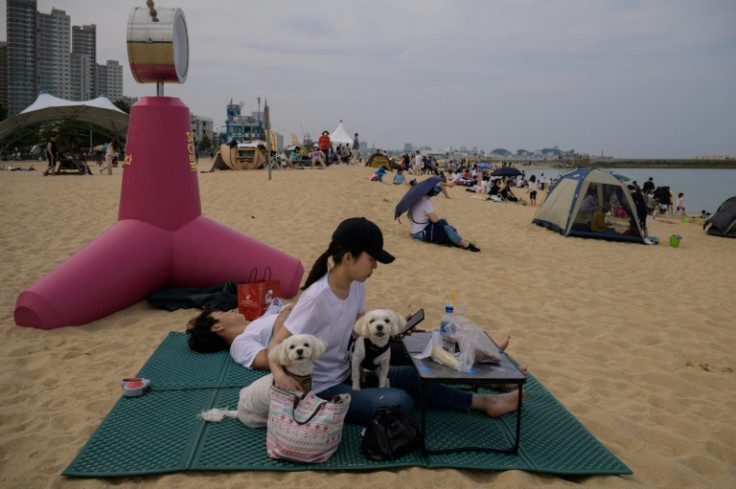S. Korea's 'Have a Career or Have a Family' Mentality to Blame for Lowest Birth Rate in the World, Study
South Korea has spent more than £200 billion on encouraging couples to have children

Women in South Korea are choosing not to have children, but if the lack of reproduction continues, Korea's population is expected to halve by the year 2100.
In 2022, South Korea saw the lowest fertility rate the country has ever seen. The average number of babies for each woman measured at 0.78 and marked the world's lowest birth rate.
Today, the trend continues.
According to official figures released this month, the fertility rate has fallen by a staggering eight per cent, measuring at a record low of 0.72 babies for each woman in 2023.
The data, which refers to the number of children a woman is expected to have in her lifetime, shows that South Korea's reproduction rate is the lowest globally.
Reports note that, for a population to hold steady, the average number of children for each woman should be 2.1.
Suppose women continue to avoid having children; over the next 50 years, South Korea will see its mandatory military service respondents shrink by 58 per cent, and the number of working-age people may be halved.
By 2074, according to Kostat, almost half of the population would be at the retirement age of 65 years old.
The falling birth rate, dubbed "a national emergency", is also expected to impact the country's economy and pension funds heavily.
The Korean government has been tackling the falling fertility rate for almost 20 years, providing potential parents with monthly handouts to support housing bills and accessible taxis.
Considering just two per cent of births in South Korea occurred outside of wedlock in 2022, in a bid to encourage more couples to have children, some nationals who are already married have also seen government funds put towards their IVF treatments and hospital bills.
While their tactics have not been effective, data published by the South Korea National Assembly Budget Office shows that the government has already spent exactly 379.8 trillion KRW on the issue – equivalent to £226 billion.
South Korean President Yoon Suk-yeol recently confirmed that the country had spent more than £160 billion on fixing the detrimental reproduction rate over the past 16 years.
Policymakers have since been criticised for invalidating a woman's right to choose whether they want to have children and for forcing women out of work to reproduce.
Speaking to the BBC, Stella Shin, who works at an after-school club, said she does not want children of her own.
Despite being married for six years, Shin said: "Mothers need to quit work to look after their child full time for the first two years, and this would make me very depressed."
"I love my career and taking care of myself."
Another 28-year-old woman and HR specialist told reporters that she knows women who have lost out on promotions and were forced out of work after taking maternity leave.
However, South Korea is not the only country in East Asia to see a decreasing birth rate in recent years. China, Japan and Singapore have also witnessed a lack of reproduction, once again, due to economic influence and certain lifestyle choices.
Politicians have been forced to develop "creative" solutions, including hiring nannies from other regions of Southeast Asia and keeping men from doing their military service if they have three or more children before turning 30.
While South Korea began encouraging couples to have children in the 2000s, neighbouring Japan implemented policies to encourage couples to have more children in the 1990s.
Singapore has also introduced fertility policies, with the first dating back to 1987.
China has also launched a campaign to boost its fertility rate after the nation saw its population decrease for the first time in 60 years.
© Copyright IBTimes 2025. All rights reserved.






















